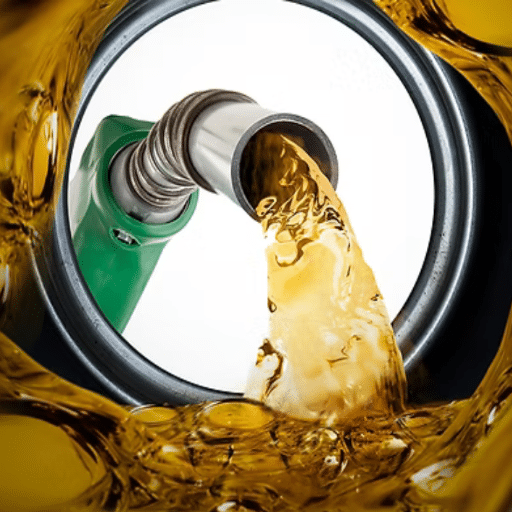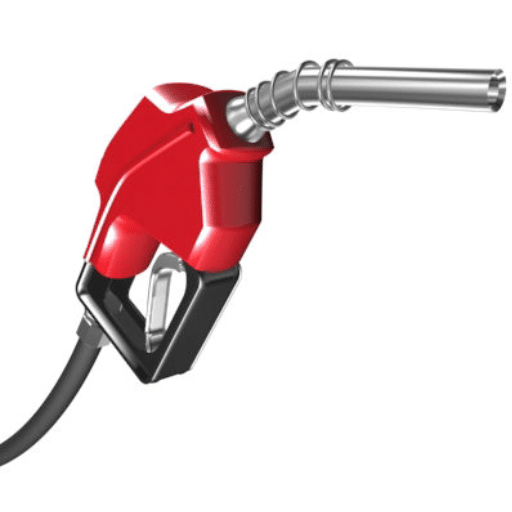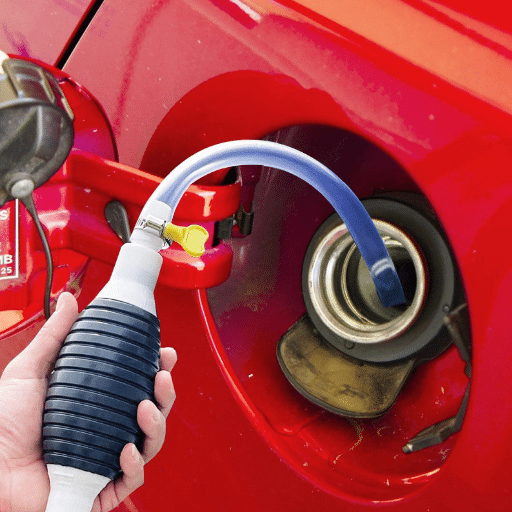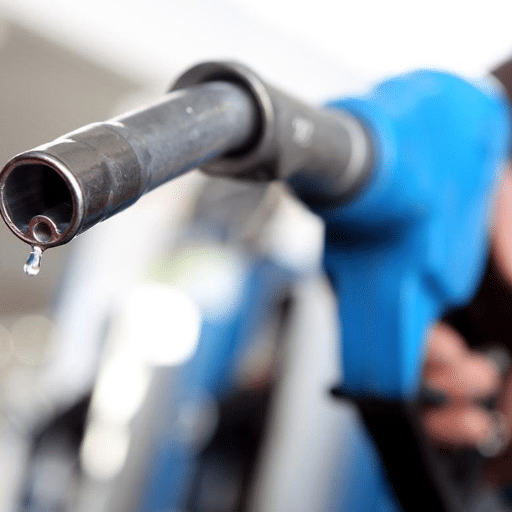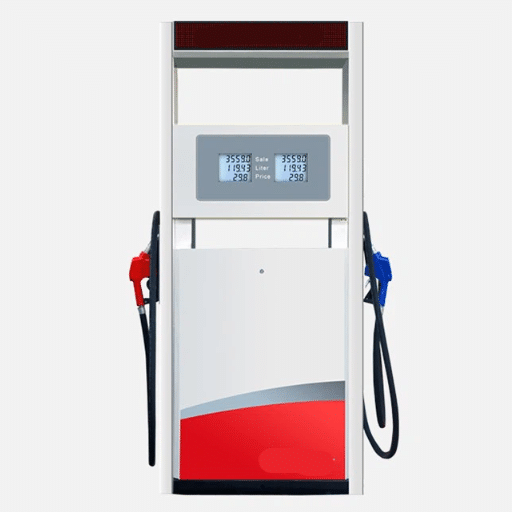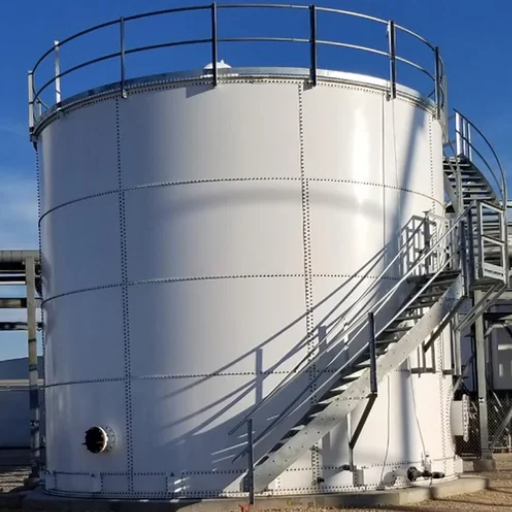With increased convenience and security for both vendors and consumers, these advanced fuel-dispersing systems are revolutionizing gas station operation. As demand for uninterrupted self-service solutions increases, it is crucial to understand the functionality and benefits of these systems. Suppose you are an owner of a gas station implementing new technologies into your business or are simply curious about a modern approach to fuel dispensing. In that case, this guide should provide you with the necessary knowledge. We will break down everything from installation and operation best practices to the details one must know to stay ahead in this evolving industry.
Introduction to Automated Fuel Dispensers

They are self-service machine equipment that allows customers to quickly and easily fill up their vehicles’ fuel without assistance. With a high-tech mechanism behind them, these machines ensure the accurate measurement of fuel provided to customers, secure payment transactions, and seamless operation. They have been specially developed to offer more convenience to users, reduce costs, and increase operational efficiency, thereby benefiting fuel station owners. With the integration of features such as digital payment methods, real-time monitoring, and maintenance alerts, automated fuel dispensers play a vital role in today’s gas stations.
What are Automated Fuel Dispensers?
These devices are automated fuel dispensers, self-service units used in gas stations to facilitate vehicle refueling. The dispensers socialize customers with some of the most advanced technological facilities, allowing them to operate independently. Through the use of advanced and integrated software systems, automated fuel dispensers can accept secure payments via digital methods, including credit cards, mobile wallets, and contactless payments, thereby providing unparalleled convenience.
Modern automated fuel dispensers, designed to ensure transparency and reliability, are fitted with metering systems to give an accurate fuel measurement. Real-time monitoring can be added to these dispensers, providing operators with advantageous data on fuel inventory levels and usage patterns. It is reported that recent advances in data analytics have enabled some stations to recover up to 20% of their fuel losses. Furthermore, automated maintenance alerts would allow operators to schedule maintenance effectively, thereby minimizing service interruptions.
Another important aspect is safety, with many dispensers incorporating features such as vapor recovery systems and emergency shut-off valves to reduce environmental risks and meet safety standards. Through these comprehensive changes, automated fuel dispensers not only enhance the user experience but also increase operational efficiency and sustainability in fuel station management. This technology continues to evolve, forming the very basis for the in-depth modernization of fuel distribution systems worldwide.
History of Fuel Dispensers
The history of fuel dispensers dates back to the late 1800s, when the first fuel dispensers were simple, manually operated pumps that transferred fuel from barrels into automobiles. In 1885, Sylvanus Bowser created the first fuel pump, which initially served to distribute kerosene but was later modified to sell gasoline as automobiles gained popularity. Increased efficiency led to system calibration, enabling the sale of measured quantities of fuel as early as the beginning of the 20th century.
Fuel dispenser designs in the 1920s and 1930s slowly began to change, with manufacturers installing clear glass cylinders to protect consumers from unwanted fuel-related activities. During this time, branding also became an accepted method, along with bright signs that made the business easy to find. The invention of electric pumps in the latter half of the 20th century revolutionized the dynamics of fuel dispensing systems by simplifying operations and improving throughput.
Over the decades, technological advances have transformed the design of fuel dispensers into fully automatic and highly efficient systems, incorporating features such as digital display units, card readers, and safety mechanisms. The present-day dispenser is capable of dispensing a diverse range of fuel types, including biofuels and compressed natural gas, while also implementing specific green processes, such as vapor recovery, to reduce emissions. IoT integrations enable smarter operations with real-time monitoring and management, laying the groundwork for end-to-end, environmentally friendly fuel station operations.
From humble beginnings to state-of-the-art systems, fuel dispensers have stood as a firm pillar for the global transportation industry. With further evolution, these systems will adapt to future energy needs, including the growing push for alternative and renewable fuel sources.
Importance of Automation in Fuel Stations
The automation of fuel stations has brought about significant changes in business operations and the customer’s ability to interact with services. The integration of advanced technologies, including IoT, AI, and cloud-based systems, into fuel stations has made these operations more efficient, secure, and customer-oriented. For instance, automated fuel dispensers with contactless payment options minimize users’ waiting time for convenience.
This also leads to automation-assisted real-time inventory management. Studies show that the new automated systems can reduce fuel loss by as much as 20% due to accurately monitored fuel levels and early detection of leaks or discrepancies. Automation enhances safety, as sensors are coupled with automatic shutdown mechanisms in the event of a hazard.
The second benefit involves gathering and analyzing data on customer preferences and station performance. According to reports, data-driven fuel stations can achieve a 15% increase in operational efficiency by optimizing staffing, scheduling, and promotional activities.
Along with this, in an evolving energy landscape, automated systems are most suited to integrate renewable energy solutions, such as EV charging stations and hydrogen fuel infrastructure, while providing a transitional service towards sustainable fueling options. These avenues thus take automation to become the foundation of a smart, functioning, and green fuel ecosystem.
Features of Automated Fuel Dispensers

Seamless Payment Options
Support for multiple payment methods, from credit/debit cards and mobile wallets to contactless payment, to guarantee customer comfort and speed.
User-Friendly Interface
Intuitive screens and prompts guide users through the fueling process with minimal effort.
Real-Time Monitoring
Advanced sensors and connectivity allow actual measurement and instantaneous reporting of usage or potential system issues.
Enhanced Security
Systems are integrated to prevent fraud through encrypted transactions and tamper-proof designs.
Energy Efficiency
Operationally optimized to consume less energy, this further reinforces the sustainability agenda.
Remote Management
Dispensers can be monitored and controlled remotely from centralized platforms by the operators, thus enabling them to manage operations more efficiently.
Key Features of Modern Dispensers
- Modern Payment Systems: Modern dispensers feature contactless payment mechanisms, including NFC and mobile app integrations, which provide both faster access and enhanced security. Such systems have been observed to reduce transaction time by 30%, thus improving convenience for the user.
- Real-Time Data Analytics: Integrated data analytics provide real-time insight regarding fuel sales, inventory, and equipment performance. For instance, with real-time monitoring, some businesses have achieved a 20% decrease in downtime, as they are alerted early enough to perform maintenance.
- Customizable User Interface: Touch-screen interfaces and intuitive design deliver a personalized experience to customers. Dispensers with multilingual support, intuitive navigation, and customized ads heighten user satisfaction and engagement.
- Environmentally Friendly Materials and Design: With sustainability in mind, dispensers typically utilize recyclable materials in conjunction with energy-saving technologies. This positions them well alongside other global climate initiatives as they reduce energy consumption by some 15% compared to older types of systems.
- IoT Capability: Today, dispensers are leveraging IoT technology, enabling seamless integration with other systems, such as fleet management or loyalty programs. IoT-enabled systems significantly contribute to operational efficiency by automating data sharing and enhancing fleet tracking.
- Better Accuracy in Fuel Measurement: Metering and calibration innovations enable precise fuel metering, thereby eliminating revenue leaks. Industry experts consider that, with the improved metering, measurement accuracy rates have increased by more than 98%.
Such features make modern-day dispensers multi-purpose and efficient systems, designed to address 21st-century challenges faced by operators and end-users in the realm of technology.
Safety Features: Automatic Shut-Off
This is considered the most critical safety feature of a modern fuel dispenser: automatic shut-off. It prevents overflows and spills by shutting down the fuel flow once the tank is full. An advanced system of sensors enables it to detect changes in pressure or fuel level in the nozzle, thereby guaranteeing a safe and efficient process.
Statistics show that spills of fuel have decreased by a substantial 75% in stations equipped with automatic shut-off systems, thereby minimizing environmental risk and reducing cleanup costs. These systems, therefore, increase operational efficiency by reducing human error while offering ease of use for both operators and customers. Regulatory bodies in many regions encourage or even require these systems, as they help make fuel distribution systems safer and more sustainable.
Monitoring Systems for Fuel Management
Modern fuel management requires high-end monitoring systems to ensure the accuracy, efficiency, and safety of fuel distribution. There is an interplay of IoT sensors, machine learning algorithms, cloud or edge-based platforms, and other technologies that provide real-time data on fuel levels, consumption rates, and leak detection. For instance, automatic tank gauging systems (ATGs) have become common in many fuel stations and can detect and record minute fluctuations in fuel levels.
Studies have found that companies that have installed fuel monitoring systems experience a decrease of up to 20% in fuel wastage due to improved tracking and optimization of fuel use. Additionally, predictive analytics enable maintenance to be scheduled in advance, reducing downtime and preventing expensive equipment failures. Since such systems also incorporate remote access and alerts on mobile phones, operators can now remain informed and take action on short notice, regardless of their location.
A leak can lead to the discharge of pollutants into channels and may become an environmental hazard; therefore, environmental concerns are mitigated through monitoring systems that often facilitate the early detection of leaks, thereby reducing the risk of contamination and ensuring adherence to stringent environmental regulations. Some platforms apply blockchain technology, which can provide an unalterable record of transactions and inventory, thereby ensuring transparency and security along the fuel supply chain. Such a level of advancement underscores the importance of monitoring systems in contemporary fuel management operations.
Types of Fuel Dispensers

| Type | Description | Best Use Case |
|---|---|---|
| Manual Fuel Dispensers | Basic, manually-operated dispensers | Small-scale or emergency fueling operations |
| Utility Fuel Dispensers | Straightforward and efficient dispensing method | Smaller fueling stations |
| Retail Fuel Dispensers | Designed for durability with integrated payment systems | Public gas stations |
| High-Flow Fuel Dispensers | Provide large volumes of fuel quickly | Industrial or commercial use, heavy equipment, fleet operations |
| Mobile Fuel Dispensers | Portable units for areas without fixed infrastructure | Remote locations or on-site fueling needs |
Gasoline vs. Diesel Dispensers
Gasoline and diesel dispensers are specifically designed to cater to the distinct properties of each fuel type, ensuring safe and efficient operation. Gasoline dispensers are built to handle lower-viscosity fuels that are more flammable, requiring components such as specialized hoses and nozzles to minimize the risk of static or sparks. Diesel dispensers, on the other hand, are optimized for higher-viscosity fuel and often operate at higher flow rates to accommodate the larger tanks of commercial vehicles and heavy machinery.
| Feature | Gasoline Dispensers | Diesel Dispensers |
|---|---|---|
| Flow Rate | 5 to 10 gallons per minute | 10 to 60 gallons per minute |
| Nozzle Size | Standard size for smaller filler necks | Larger to prevent misfueling |
| Filtration Requirements | Less stringent filtration | Heavy filtration to prevent contaminants |
| Vapor Recovery | Greater consideration for emissions | Less emphasis on vapor recovery |
The general servicing requirements also differ, with diesel dispensers requiring heavy filtration to keep contaminants out of the fuel, which is particularly crucial in preventing engine damage with diesel engines. Gasoline dispensers are less stringent in terms of filtration, but vapor recovery systems are given greater consideration to comply with laws and reduce vapor emissions. Both types of dispensers are customized to suit the demands of their respective fuels, offering safe, efficient, and legal use for the specific need at hand.
Manual vs. Automated Pump Dispensers
| Aspect | Manual Pump Dispensers | Automated Pump Dispensers |
|---|---|---|
| Operation | Require physical effort to dispense fuel | Utilize advanced technology for automatic dispensing |
| Cost | Cheaper initial investment | Higher initial costs |
| Precision | Less precise in measuring fuel | Margin of error approximately 0.5% |
| Power Requirements | No electricity needed | Requires electrical power |
| Payment Options | Limited payment methods | RFID tags, contactless options, multiple payment methods |
| Maintenance | Simple mechanical maintenance | Electronic maintenance required |
Manual pump dispensers require physical effort to dispense fuel, making them relatively simple to design and thus often cheaper than automatic ones. These systems find great use in areas where either there is no electricity or electricity cannot be relied upon, such as rural areas or during power outages. Nevertheless, manual dispensers are not very precise in measuring fuel, and cannot compete in handling volumes efficiently, especially when the volume involved is higher.
The automated pump dispensers, utilizing advanced technology to facilitate the fueling process, feature digital displays, electronic flow meters, and programmable systems that dispense fuel with precision and accuracy. Industry data suggest that automated systems reduce fuel losses through exact metering, with a margin of error of approximately 0.5%. Additionally, many computerized dispensers support newer payment systems, utilizing RFID tags and contactless options for enhanced convenience and speed during transactions at gas stations.
Automated dispensers, with their efficiency advantages and user-friendly features, also come with high initial costs and subsequently require electronic maintenance. Manual systems remain available at a lower price point to serve lesser-volume operations or for backup use. The choice between these options could also depend on factors such as the use case, budget, and the amount of fuel that needs to be handled.
Specialized Nozzles for Different Fuels
Specialized nozzles ensure particular dispensing needs for different fuel types, thereby enhancing safety, efficiency, and environmental protection. Thus, diesel fuel nozzles are often of a larger diameter than those for gasoline, so they cannot fit into the smaller filler necks of vehicles that take unleaded petrol. Likewise, CNG nozzles are designed to handle high-pressure applications, featuring reinforced materials and locking mechanisms to ensure safe transfer.
Nozzle designs required for ethanol and biodiesel blends are relatively uncommon nowadays. They are made with resistant materials that can withstand the corrosive characteristics of these fuels, providing durability and long-term reliability to the nozzles. Additionally, the dispensing of gasoline sometimes occurs through vapor recovery nozzles, which contain systems designed to trap harmful vapors and reduce total emissions, thereby conforming to environmental regulations.
Designs are back in full force for specialized nozzles that enhance fuel efficiency and protect the environment. According to an industry assessment, vapor recovery nozzles can reduce hydrocarbon emissions by as much as 95%, significantly contributing to the formation of cleaner air. Additionally, there is an increasing trend to develop intelligent or automated nozzles. Equipped with sensors, these nozzles can measure flow rates, identify fuel leaks, and prevent overfilling, thereby minimizing fuel wastage and maximizing fuel utilization. Different nozzle designs enable the safe and effective dispensing of all types of fuel, meeting both operational and environmental requirements.
Benefits of Automated Fuel Dispensers

Key Benefits Overview
Automated fuel dispensers have the key benefits that make the process more efficient, safer, and more convenient from a consumer standpoint. First, they minimize waiting times and increase speed and accuracy during fuel dispensing, so the refueling process is very smooth and efficient. Second, these dispensers have safety features that mitigate hazards such as fuel leaks or spills, thus creating a safer environment. Third, accurate fuel dispensing reduces wastage and better utilizes available resources, ultimately saving money. Fourth, automatic systems can also operate on a 24-hour basis, thereby providing users with higher accessibility and convenience. In brief, these dispensing systems offer a reliable and environmentally friendly refueling solution.
Efficiency in Fuel Delivery
Developments in technology have significantly enhanced the efficiency of fuel delivery systems. Today, fuel dispensers are equipped with IoT devices that enable live monitoring and data analysis for optimizing distribution networks. For example, smart sensors may be installed in fuel storage tanks to measure fuel contents with micro-precision, thereby eliminating the risk of fuel stations running out of fuel or overstocking.
Automated systems have, furthermore, enabled an efficient fuel delivery logistics system by supplying it with the predictive analytics required for its operation. According to a report from industry experts, through predictive maintenance and improved routing, downtime has been reduced by up to 30%, and delivery has been improved by 20%. These changes are also helped by clean and energy-efficient methods of transportation, such as electric or hybrid vehicles for delivery, which lessen carbon emissions.
Less waiting and faster, smoother transactions are what amount to efficiency in fuel delivery via systems of contactless payments and stations with automated security checks. On the whole, these changes demonstrate how fuel delivery systems are being transformed by technology into something that meets the demands of today’s world while remaining sustainable.
Improved Customer Experience
Fuel-delivery systems in the modern world are ideally customer-centric, to utilize technology to provide seamless and flawless services. Mobile apps enable customers to locate nearby fuel stations, compare prices, and schedule fuel delivery directly to their vehicles or homes. According to industry data, 83% of consumers consider convenience to be the most critical factor in their purchasing decisions, making these digital tools a must-have for them.
Loyalty programs integrated with fuel apps encourage customer interaction by offering discounts, cash back, and special offers. Real-time updates on fuel availability and prices maintain transparency; users report that the app reduces the time spent waiting to find fuel at a discount by 25%. Chatbots and virtual assistants are available 24/7 to address FAQs and assist with troubleshooting, which fosters trust and reliability. Such advancements increase customer convenience and personalize fuel delivery for greater efficiency.
Reduced Labor Costs for Gas Stations
Today, with digitalization and automation, labor costs have almost vanished at gas stations. Customers can pay for fuel at their own pace through self-service fuel pumps or app-based payment systems, which means fewer workers need to be maintained on site. Studies, for example, suggest that the retail fuel business can undergo automation and achieve a 20-30% reduction in labor operation costs. Leveraging predictive maintenance with IoT sensors for monitoring equipment performance helps reduce downtime, thereby decreasing the need for expensive manual inspections or repairs. A reduction in payroll expenses through resource reallocation allows gas station operators to prioritize either strategic business growth or excellent customer service.
The Future of Fuel Dispensers
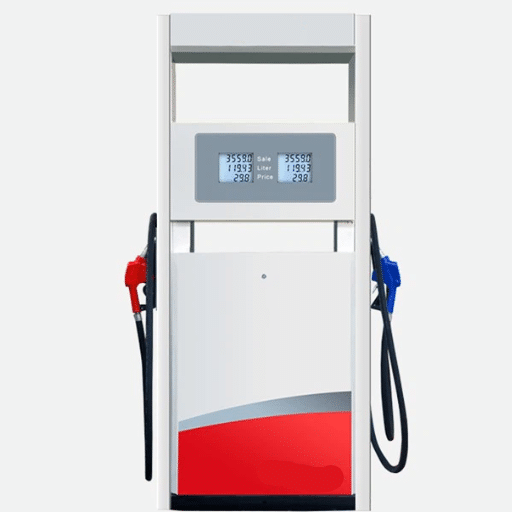
This discussion focuses on the future of efficiency, sustainability, and enhanced customer convenience. Bright fuel dispensers with IoT capabilities will utilize real-time tracking systems, rather than recording meter data, which improves transaction speed. Regarding payment systems, the new contactless option will facilitate faster refueling and enhance customer satisfaction. On the greener side, new technology promoting alternative fuels, such as electric or hydrogen-powered dispensers, will further encourage cleaner energy alternatives. Fundamentally, these changes will make the fuel stations more efficient and environmentally friendly.
Trends in Automation and Smart Technology
The rapid adoption of automation and innovative technology has been transforming industries worldwide in numerous ways, enhancing efficiency, convenience, and innovation. Among the trends are the applications of artificial intelligence (AI) and machine learning (ML) in the daily operation of industries. For instance, AI-powered predictive maintenance can reduce downtime in manufacturing by up to 20%. At the same time, ML algorithms enable supply chains to operate more efficiently, forecast demand with greater accuracy, and optimize inventory levels.
The Internet of Things (IoT) is another significant disruptor for effective business operations, with connected devices expected to reach 19.1 billion by 2025. There are smart sensors enabled by the IoT that can be used across retail, agriculture, and healthcare, informing decision-makers to act more wisely and quickly. Smart thermostats and lighting systems, for example, are increasingly being used in homes and businesses, which could help reduce energy consumption by almost 30%.
Hence, empowering automation enhances customer experiences through innovative implementations, such as self-checkouts and chatbots. In this context, the chatbot market is forecasted to record a compound annual growth rate (CAGR) of 23.5% from 2023 to 2030, underscoring the need for individualized and efficient solutions in customer support. The autonomous vehicle and drone markets, meanwhile, are realigning transportation and logistics into safer and speedier delivery modes.
Thus, with such developments, a new-age innovative ecosystem is emerging that integrates automation and technology into everyday work processes to achieve significant productivity and cost advantages in various sectors.
Impact of Electric Vehicles on Fuel Dispensers
From an analysis that impacts the field of traditional fuel dispensers, the rise of electric vehicles (EVs) is the prime cause. Supplying conventional fuel diminishes demand for it while, in turn, reducing fuel dispenser usage at gas stations. Now, fuel stations are adapting by installing EV chargers to cater to the new generation of electric vehicle users. The transition requires innovation in energy distribution to nourish the sustainable electric-powered way forward.
Innovations on the Horizon for Fuel Stations
Rapid transformation is underway in fuel stations in response to the growing demand for sustainable energy solutions. A significant innovation is that most stations have accepted and installed EV charging stations, with many fast chargers opting to reduce the waiting time for electric vehicle owners. Some stations are utilizing renewable energy sources, such as solar power, to power their operations and achieve carbon neutrality. Sophisticated payment systems are being introduced for customers’ convenience, and mobile-app-based and contactless payment options are among them. Besides charging, some stations are also exploring various services, such as co-working spaces, cafes, and parcel lockers, to transform into multifunctional hubs for the new-age consumer. These changes are one of the evolutions away from the classic fueling-model approach toward an approach focused on sustainability and customer experience.
Reference Sources
Frequently Asked Questions (FAQs)
What is an automated fuel dispenser?
An automated fuel dispenser is a type of fuel dispensing equipment that allows customers to self-serve their fuel needs at the gas station. These dispensers utilize modern technology to charge and dispense fuel efficiently, typically without requiring assistance from gas station attendants.
How do automated fuel dispensers work?
An automotive fuel dispenser is an integrated fuel management system that authorizes transactions and monitors usage. The customer will select their fuel grade, pay at the pump using an electronic payment system, and then release the fuel. They manage the entire operation independently.
What services do automated fuel dispensers render?
Automated fuel dispensers are equipped with various features, including rapid rate-based dispensing, automatic shut-off to prevent spills, and straightforward monitoring capabilities, enabling fuel station operators to manage their inventory and billing information effectively.
What are the various safety arrangements applicable to fuel dispensers?
Fuel dispensers must be equipped with several safety features to protect customers and fuel station operators. These might include fuel spill prevention systems, emergency shut-off valves, and secure payment processing that protects lost or stolen data in the course of a transaction.
Are customers capable of selecting the correct fuel grade at automated fuel dispensers?
Yes. At automated fuel dispensers, customers can select the fuel grade they want: petrol or diesel. This offers supreme convenience and flexibility, allowing users to choose the option that best suits their vehicle.
How does billing and payment operate at fuel stations with automated dispensers?
At fuel stations equipped with automated fuel dispensers, customers could make payments at the pump using electronic card-based payment systems. The billing information is processed, sent to the bank, and an accurate charge is made based on the amount of fuel being dispensed and the grade of fuel selected.
What is the role of a gas station attendant with automated fuel dispensers?
While automated fuel dispensers require fewer gas station attendants, there is still a need for an attendant to assist customers with questions or concerns that may arise during the dispensing process. They might also ensure the proper operation of the dispensers and implement safety standards.
How do automated fuel dispensing systems help with better fuel management?
Automated fuel dispensing systems can assist in fuel management by providing real-time information on fuel flow and consumption. This will enable fuel station operators to manage their inventory more effectively, streamline operations, and develop innovative solutions for fuel management, ultimately enhancing operational efficiency.

